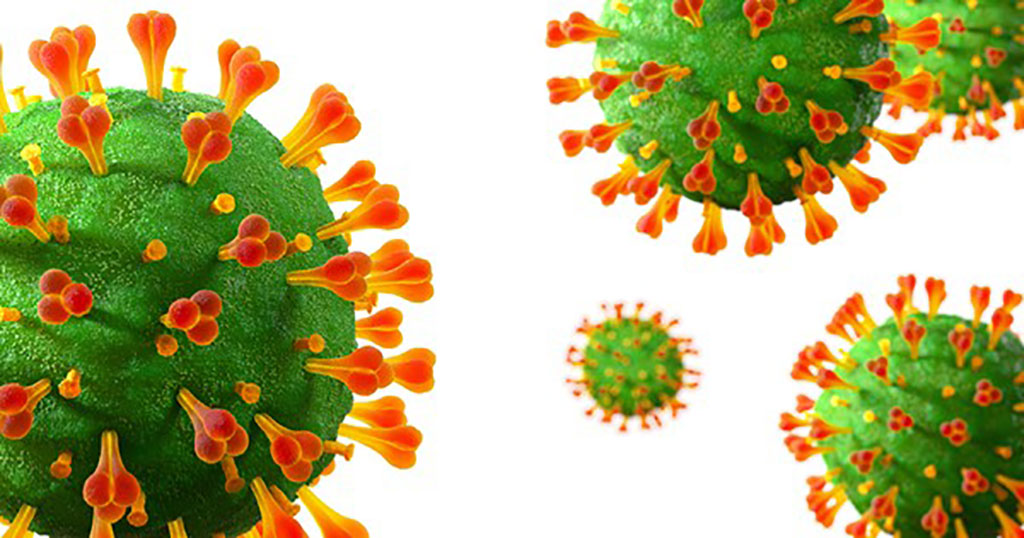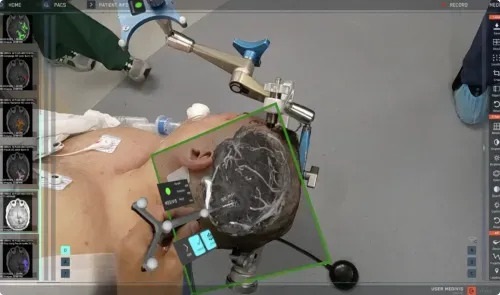Researcher Claims COVID-19 Damages Hemoglobin and Hydroxychloroquine Promises Coronavirus Immunity
|
By HospiMedica International staff writers Posted on 05 May 2020 |

Illustration
An Italian pharmacology scholar has claimed that COVID-19 damages the hemoglobin, thus impairing the ability of red blood cells to transport oxygen throughout the body, affecting the lungs and leading to Acute Respiratory Distress Syndrome (ARDS).
In an explanation of her thesis to The Jerusalem Post, Annalisa Chiusolo said that her theory provides the answers to several questions about the novel coronavirus, including the higher vulnerability demonstrated by men, particularly diabetics, to becoming seriously ill from the virus, as well as the lower rate of COVID-19 infection among pregnant women and children. Chiusolo believes that understanding this mechanism can pave the way for a quicker discovery of highly effective drugs for treating the virus.
Chiusolo who is a graduate of the Faculty of Pharmacy of the University of Perugia, Italy, and works as a pharmacist in the country has published her theory in some of the leading Italian newspapers. According to Chiusolo, SARS-CoV-2 is dependent upon porphyrins for surviving and possibly for replicating, making it attack hemoglobin, the protein that carries oxygen in the blood, resulting in less oxygen available for the body. As a result of less oxygen, carbon dioxide gets accumulated.
Chiusolo has also evaluated the use of hydroxychloroquine to treat SARS-CoV-2, and has found that in addition to having an antiviral and immunomodulatory effect, the drug binds to the ferriprotoporphyrin of the ecgonine methyl ester (EME), thereby blocking the key enzyme of malaria. Ferriprotoporphyrin is the group responsible for the oxygen binding of hemoglobin. Chiusolo believes that a similar mechanism can be used against SARS-CoV-2. Her theory is supported by a study by a Chinese university demonstrating that SARS-CoV-2 binds to the beta chain of hemoglobin, thereby inhibiting EME metabolism.
According to Chiusolo, hydroxychloroquine could act as a prophylactic, thus preventing or limiting the symptoms of COVID-19 while a vaccine is being formulated that specifically stimulates the body’s antibody response. Chiusolo believes that hydroxychloroquine could make the patient immune to COVID-19 and/or limit its side effects, but admitted that the drug does has some severe side-effects, especially among patients having heart disease.
In an explanation of her thesis to The Jerusalem Post, Annalisa Chiusolo said that her theory provides the answers to several questions about the novel coronavirus, including the higher vulnerability demonstrated by men, particularly diabetics, to becoming seriously ill from the virus, as well as the lower rate of COVID-19 infection among pregnant women and children. Chiusolo believes that understanding this mechanism can pave the way for a quicker discovery of highly effective drugs for treating the virus.
Chiusolo who is a graduate of the Faculty of Pharmacy of the University of Perugia, Italy, and works as a pharmacist in the country has published her theory in some of the leading Italian newspapers. According to Chiusolo, SARS-CoV-2 is dependent upon porphyrins for surviving and possibly for replicating, making it attack hemoglobin, the protein that carries oxygen in the blood, resulting in less oxygen available for the body. As a result of less oxygen, carbon dioxide gets accumulated.
Chiusolo has also evaluated the use of hydroxychloroquine to treat SARS-CoV-2, and has found that in addition to having an antiviral and immunomodulatory effect, the drug binds to the ferriprotoporphyrin of the ecgonine methyl ester (EME), thereby blocking the key enzyme of malaria. Ferriprotoporphyrin is the group responsible for the oxygen binding of hemoglobin. Chiusolo believes that a similar mechanism can be used against SARS-CoV-2. Her theory is supported by a study by a Chinese university demonstrating that SARS-CoV-2 binds to the beta chain of hemoglobin, thereby inhibiting EME metabolism.
According to Chiusolo, hydroxychloroquine could act as a prophylactic, thus preventing or limiting the symptoms of COVID-19 while a vaccine is being formulated that specifically stimulates the body’s antibody response. Chiusolo believes that hydroxychloroquine could make the patient immune to COVID-19 and/or limit its side effects, but admitted that the drug does has some severe side-effects, especially among patients having heart disease.
Latest COVID-19 News
- Low-Cost System Detects SARS-CoV-2 Virus in Hospital Air Using High-Tech Bubbles
- World's First Inhalable COVID-19 Vaccine Approved in China
- COVID-19 Vaccine Patch Fights SARS-CoV-2 Variants Better than Needles
- Blood Viscosity Testing Can Predict Risk of Death in Hospitalized COVID-19 Patients
- ‘Covid Computer’ Uses AI to Detect COVID-19 from Chest CT Scans
- MRI Lung-Imaging Technique Shows Cause of Long-COVID Symptoms
- Chest CT Scans of COVID-19 Patients Could Help Distinguish Between SARS-CoV-2 Variants
- Specialized MRI Detects Lung Abnormalities in Non-Hospitalized Long COVID Patients
- AI Algorithm Identifies Hospitalized Patients at Highest Risk of Dying From COVID-19
- Sweat Sensor Detects Key Biomarkers That Provide Early Warning of COVID-19 and Flu
- Study Assesses Impact of COVID-19 on Ventilation/Perfusion Scintigraphy
- CT Imaging Study Finds Vaccination Reduces Risk of COVID-19 Associated Pulmonary Embolism
- Third Day in Hospital a ‘Tipping Point’ in Severity of COVID-19 Pneumonia
- Longer Interval Between COVID-19 Vaccines Generates Up to Nine Times as Many Antibodies
- AI Model for Monitoring COVID-19 Predicts Mortality Within First 30 Days of Admission
- AI Predicts COVID Prognosis at Near-Expert Level Based Off CT Scans
Channels
Artificial Intelligence
view channel
AI-Powered Algorithm to Revolutionize Detection of Atrial Fibrillation
Atrial fibrillation (AFib), a condition characterized by an irregular and often rapid heart rate, is linked to increased risks of stroke and heart failure. This is because the irregular heartbeat in AFib... Read more
AI Diagnostic Tool Accurately Detects Valvular Disorders Often Missed by Doctors
Doctors generally use stethoscopes to listen for the characteristic lub-dub sounds made by heart valves opening and closing. They also listen for less prominent sounds that indicate problems with these valves.... Read moreCritical Care
view channel.jpeg)
Transcatheter Valve Replacement Outcomes Similar To Surgery, Finds Study
A new study has shown that a minimally invasive procedure for replacing the aortic valve in the heart—known as transcatheter aortic valve replacement (TAVR)—is on par with the more traditional surgical... Read more
Revascularization Improves Life Quality in Chronic Limb-Threatening Ischemia, Finds Study
Researchers have undertaken a detailed study to evaluate the effects of revascularization strategies on the health-related quality of life (HRQoL) of patients with chronic limb-threatening ischemia.... Read moreSurgical Techniques
view channel
AR Surgical Technology Translates Complex 2D Medical Imaging to Enhance Accuracy
Surgeons often have to switch their focus between a patient’s data displayed on a screen or clipboard and the patient themselves during procedures. But that is about to change. Surgeons can now utilize... Read more
Miniaturized Snake-Like Probe Images Cerebral Arteries From Within
Endovascular interventions are being increasingly favored for treating strokes and cerebral artery diseases, but rely heavily on angiographical imaging that often struggles with limited contrast and spatial... Read morePatient Care
view channelFirst-Of-Its-Kind Portable Germicidal Light Technology Disinfects High-Touch Clinical Surfaces in Seconds
Reducing healthcare-acquired infections (HAIs) remains a pressing issue within global healthcare systems. In the United States alone, 1.7 million patients contract HAIs annually, leading to approximately... Read more
Surgical Capacity Optimization Solution Helps Hospitals Boost OR Utilization
An innovative solution has the capability to transform surgical capacity utilization by targeting the root cause of surgical block time inefficiencies. Fujitsu Limited’s (Tokyo, Japan) Surgical Capacity... Read more
Game-Changing Innovation in Surgical Instrument Sterilization Significantly Improves OR Throughput
A groundbreaking innovation enables hospitals to significantly improve instrument processing time and throughput in operating rooms (ORs) and sterile processing departments. Turbett Surgical, Inc.... Read moreHealth IT
view channel
Machine Learning Model Improves Mortality Risk Prediction for Cardiac Surgery Patients
Machine learning algorithms have been deployed to create predictive models in various medical fields, with some demonstrating improved outcomes compared to their standard-of-care counterparts.... Read more
Strategic Collaboration to Develop and Integrate Generative AI into Healthcare
Top industry experts have underscored the immediate requirement for healthcare systems and hospitals to respond to severe cost and margin pressures. Close to half of U.S. hospitals ended 2022 in the red... Read more
AI-Enabled Operating Rooms Solution Helps Hospitals Maximize Utilization and Unlock Capacity
For healthcare organizations, optimizing operating room (OR) utilization during prime time hours is a complex challenge. Surgeons and clinics face difficulties in finding available slots for booking cases,... Read more
AI Predicts Pancreatic Cancer Three Years before Diagnosis from Patients’ Medical Records
Screening for common cancers like breast, cervix, and prostate cancer relies on relatively simple and highly effective techniques, such as mammograms, Pap smears, and blood tests. These methods have revolutionized... Read morePoint of Care
view channel
Critical Bleeding Management System to Help Hospitals Further Standardize Viscoelastic Testing
Surgical procedures are often accompanied by significant blood loss and the subsequent high likelihood of the need for allogeneic blood transfusions. These transfusions, while critical, are linked to various... Read more
Point of Care HIV Test Enables Early Infection Diagnosis for Infants
Early diagnosis and initiation of treatment are crucial for the survival of infants infected with HIV (human immunodeficiency virus). Without treatment, approximately 50% of infants who acquire HIV during... Read more
Whole Blood Rapid Test Aids Assessment of Concussion at Patient's Bedside
In the United States annually, approximately five million individuals seek emergency department care for traumatic brain injuries (TBIs), yet over half of those suspecting a concussion may never get it checked.... Read more
New Generation Glucose Hospital Meter System Ensures Accurate, Interference-Free and Safe Use
A new generation glucose hospital meter system now comes with several features that make hospital glucose testing easier and more secure while continuing to offer accuracy, freedom from interference, and... Read moreBusiness
view channel
Johnson & Johnson Acquires Cardiovascular Medical Device Company Shockwave Medical
Johnson & Johnson (New Brunswick, N.J., USA) and Shockwave Medical (Santa Clara, CA, USA) have entered into a definitive agreement under which Johnson & Johnson will acquire all of Shockwave’s... Read more



















